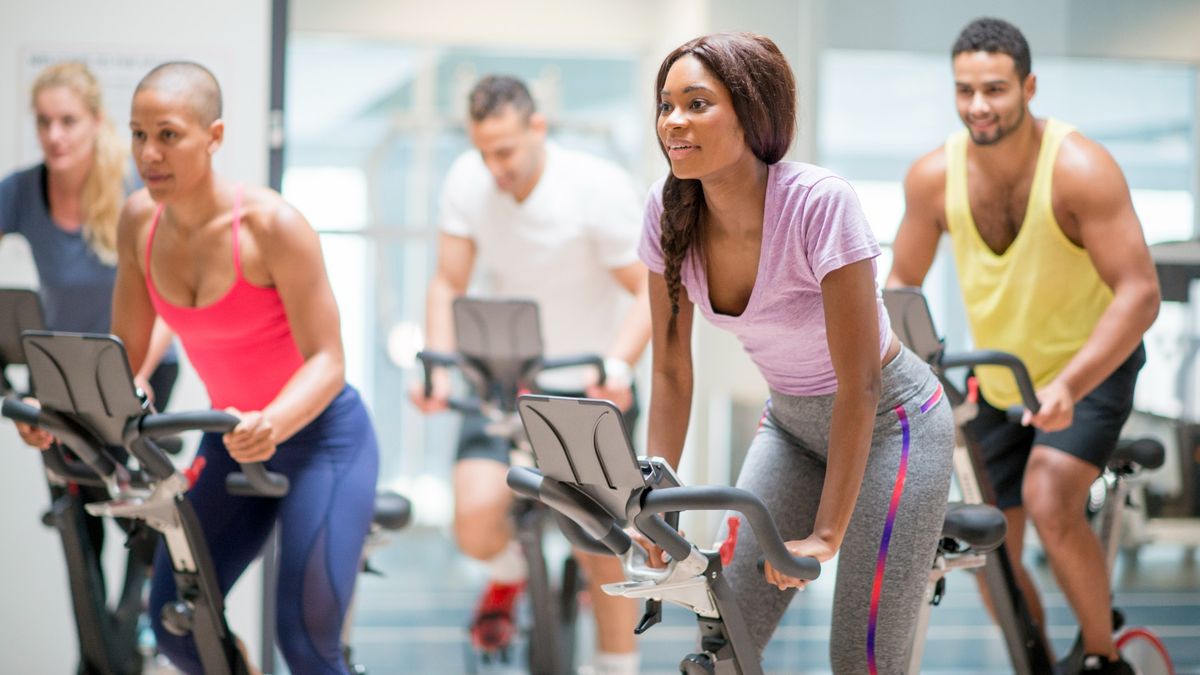There is no turning back, indoor cycling hurts all over, but which muscles specifically work to turn?
This HIIT workout will definitely push your leg muscles harder, with your glutes, quads, and hamstrings doing most of the work. While other parts of your body will be involved during the exercise, these are the main muscles that keep the pedals turning.
However, the muscles are active at different points in the pedal revolution, so you can expect to feel them burn at different stages. This is how they work together to keep things moving.
gluteal muscles
When you ride upright in the saddle, your legs do nearly 100% of the work, while your torso helps stabilize your upper body. Two major leg muscles perform most of the workload and produce most of the power during cycling: the glutes and the quadriceps.
Each revolution of the pedals will use different muscles in different parts. The glutes, the muscles on the surface of the buttocks, will wake up and work hard during the first phase of the pedal revolution, when you push down.
“By pushing the bike, the gluteal muscles, in particular the gluteus maximus, will be more active,” says the physical therapist. Lyndsay Hirst. “They will also grasp the hip from a flexed position, moving in the direction of hip extension.”
quadriceps
The quadriceps (quadriceps) also work hard during this down cycle – these are the large, strong muscles located at the front of the thigh.
“During this phase, the quads will be contracting to continue to force the pedal down to the ground and extend the knee,” says Hirst. “The rectus femoris, part of the quadriceps group, will create the most force and therefore work the hardest during this phase.”
A 2016 study conducted by the European Journal of Applied Physiology found that the rectus femoris was activated more in the first quadrant (the first quarter section of a pedaling rotation) and the fourth quadrant (the final section) of the crank revolution.
hamstrings
The hamstrings, the muscles at the back of the thigh, get their turn to shine in the second half of the pedal revolution (when the legs return to their starting position). To a lesser extent, the calf muscles, located at the back of the lower leg, also help here.
This upward “pulling” motion is enhanced if the cyclist is using clipless pedals (counterintuitively, this means they are wearing special spinning shoes that hook onto the bike’s pedals).
“As the pedal begins its backward travel and the knee begins to flex, the hamstrings will now be active as well,” says Hirst.
other muscles
There are several other muscles that get a workout while on the bike, many of which you may not have thought of. “The ankle plantar flexors and dorsiflexors will also play a role in helping to stabilize the foot on the pedal,” says Hirst.
And your arm muscles shouldn’t feel left out either. Your shoulders, biceps, triceps, and pecs do a lot of work when you get out of the saddle, for example while climbing steep (virtual) hills, running through fast sections, or pushing through the heavy-duty parts of a class. spinning.
Your core should do a good job when you’re out of the saddle, as it’s working to keep you upright and supported.
Bibliography
da Silva, JCL, Tarassova, O., Ekblom, MM, Andersson, E., Rönquist, G., and Arndt, A. (2016). Activity of the quadriceps and hamstring muscles during cycling measured with intramuscular electromyography. European Journal of Applied Physiology, 116(9), 1807–1817. https://doi.org/10.1007/s00421-016-3428-5
